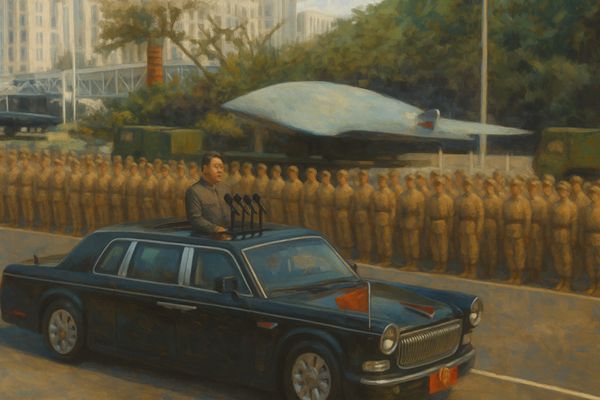Drones, Swarming and Collaborative robots

Drones, Swarming and Collaborative Robots: Enhancing National Capability
Unmanned aerial and ground systems—collectively referred to as drones, swarms, and collaborative robots—are transforming national defense, intelligence, and critical infrastructure protection by enabling persistent, cost-effective, and scalable operations. Modern drones leverage advances in miniaturized sensors, robust communications, and AI-driven autonomy to perform tasks ranging from reconnaissance to precision strike. When deployed in coordinated swarms, these platforms exhibit emergent behaviors—such as distributed sensing, dynamic task allocation, and redundancy—that outpace the capabilities of individual systems. Collaborative robots (cobots) extend these principles to industrial and logistical domains, working alongside human operators to enhance productivity, resilience, and workplace safety. As global strategic competition intensifies, mastery over these networked systems is essential for sustaining technological leadership, operational agility, and force multiplication.
At the hardware level, contemporary drones integrate lightweight composite airframes, high-efficiency electric propulsion, and modular payload bays that can host electro-optical/infrared cameras, electronic warfare suites, or precision-guided munitions. Ground-based cobots employ torque-sensing joints, vision systems, and compliant end-effectors to safely interact with people and variable environments. Underpinning these platforms, swarming algorithms—rooted in principles of decentralized consensus, bio-inspired flocking, and reinforcement learning—enable hundreds of units to autonomously navigate contested spaces, maintain formation, and reassign roles in real time without centralized control. This resilience to jamming or single-point failures makes swarms particularly suited for surveillance in anti-access/area-denial (A2/AD) environments.
Strategic Importance
From a national capability perspective, drones and swarms deliver rapid situational awareness at a fraction of traditional reconnaissance costs. Distributed sensor networks can monitor border incursions, maritime traffic, and critical infrastructure around the clock, reducing response times by up to 70 percent. In conflict scenarios, swarms complicate adversary targeting by presenting multiple, redundant platforms that can overwhelm air defenses. Collaborative robots boost domestic industrial output by automating hazardous or repetitive tasks, increasing throughput by 40 percent while lowering workplace injuries. Together, these systems enhance operational tempo, reduce personnel risk, and provide scalable tools for both military and civilian applications.
Global Leaders in Drone Swarm and Cobot Technology
United States
The U.S. Department of Defense leads in swarm experimentation through programs like the Collaborative Operations in Denied Environment (CODE) initiative, fielding quadrotor swarms capable of contested-area reconnaissance and electronic attack. DARPA’s OFFSET program further explores urban swarm tactics for infantry support.
China
China’s People’s Liberation Army and defense firms such as China Electronics Technology Group (CETC) have demonstrated large-scale swarm tests involving fixed-wing and rotary platforms, focusing on anti-ship operations and rapid area mapping in the South China Sea. State laboratories also pioneer cobots for manufacturing semiconductors and automotive assembly.
Israel
Israel’s defense industry, led by firms like Elbit Systems and Rafael, integrates AI-driven swarming modules into tactical drones for platoon-level ISR and loitering munitions. Cobots developed by Israeli startups automate logistics at airbases, improving sortie turnaround times by 30 percent.
United Kingdom
The UK’s Defence Science and Technology Laboratory (Dstl) partners with academic centers to develop bio-inspired swarm controllers and validate them in live exercises. Collaborative robots in Royal Air Force maintenance hangars conduct non-critical inspections, augmenting human technicians.
India
India’s DRDO has unveiled indigenous quadrotor swarms designed for crowd monitoring and counter-insurgency, while Indian Railways pilots cobots to handle track inspections and repair tasks, boosting network uptime.
Future Trajectory
As adversaries develop counter-drone measures—such as directed-energy jammers and interceptor loitering munitions—continued investment in autonomy, secure communications, and AI-hardened swarm algorithms will be paramount. Standardizing interoperability protocols across allied systems will enable combined swarm operations in coalition settings. In the civilian realm, integrating cobots with 5G-enabled IoT infrastructures promises smarter factories and resilient supply chains. By cultivating robust R&D ecosystems, establishing clear regulatory frameworks, and fostering industry–university–defense collaborations, nations can ensure these unmanned, networked systems remain a force multiplier that underpins both strategic deterrence and economic vitality.




